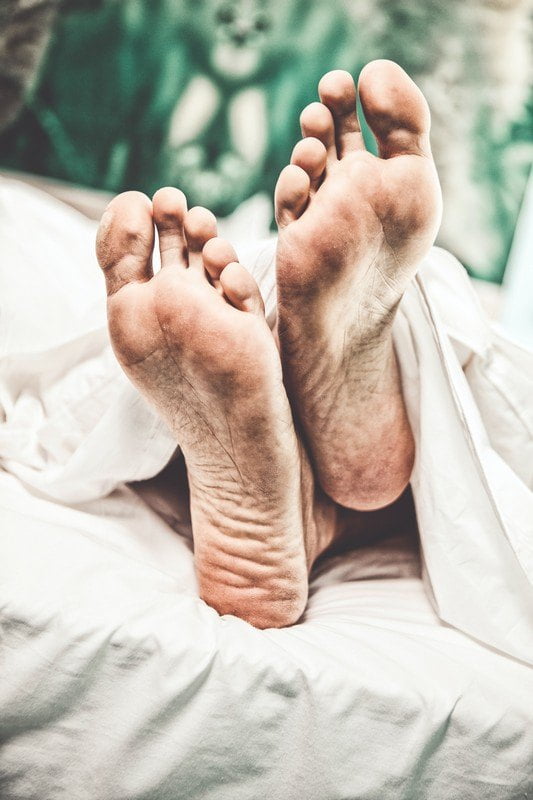04 Apr Bunion Prevention – how do you stop a bunion from forming?
Bunion Prevention – how do you stop a bunion from forming?
Bunions affect 1 in 3 people and are incredibly common. While there are a number of treatment options available for bunions, the best option is to prevent them from developing in the first place.
How do I know if I’m at risk of getting a bunion?
- Bunions are genetic, so if anyone in your family suffers from them, there is a higher chance that you may also develop one
- A visual deviation of the big toe – this often shows up as the big toe moving closer to the second toe
- Enlargement of the big toe joint or development of a bony growth
- Experiencing pain in the big toe joint – this can often be the last symptom to show
How can I prevent a bunion from forming?
- Check your feet regularly and be aware of any changes, even if they seem small. The sooner you can address these changes, the higher chance you have of reducing or avoiding a bunion
- Choose appropriate shoes. If you have a tendency to get bunions, avoid wearing shoes that are tight. While heels have a reputation for being the most restrictive type of footwear, it may actually be your comfy runners that are causing the biggest problem. A study out of the UK showed that runners that were too tight put more pressure and accelerated a bone growth (the bone that sticks out with a bunion) faster than heels.
- Do regular training exercises to strengthen the muscles in your feet and ankles. Work on strengthening all parts of your foot, including the muscles around the toes.

These 2 are particularly good at both helping and preventing a bunion.
The Big Toe Exercise:
This exercise targets the big toe joint and helps to improve its range of motion.
- Cross your left ankle over your right knee (opposite for your right foot).
- Use your left hand to stabilise your foot.
- With a flat palm, slide your right hand between your first and second toes, gripping your big toe.
- Move your big toe in a clockwise direction 10 times, and then in an anticlockwise direction 10 times, morning and night.
PRO TIP: Ensure that you are moving your toe at the base, not at the top joints. Grinding noises in the joint are fine, unless it is painful. If this is the case, stop the exercise immediately and consult your practitioner.
The Bunion Straightening Exercise:
This exercise will strengthen the muscle that moves your big toe from side to side. This will assist in slowing the progress of a bunion deformity and help with the realignment of the big toe.
- Sit on the edge of a chair with your feet on the ground.
- Relax your feet and legs.
- Move your big toe away from your other toes with your hand, keeping the muscles relaxed.
- Keep the toe in this position by tensing the muscles and pushing the inside and outside edge of your toe/foot into the floor.
PRO TIPS: There may not be much movement of the big toe in relation to the second toe (only a few millimetres). The muscles need to be relaxed until the big toe is in position. You can use something to put the big toe in position if you can’t reach it, such as a ruler or wooden spoon.
What should I do if I already have a bunion?
If you already have one or more bunions, there are still things that you can do to help reduce its progression.
- Avoid wearing shoes that are too tight or narrow
- Consider using bunion pads or splints to help straighten the toe and reduce pain
- Do the above exercises regularly to keep the muscles around the toes strong
- Seek treatment from a podiatrist who specialises in bunions
When to Seek Treatment
If you have a bunion, it is important that you seek treatment before it becomes too advanced. Bunions can become very painful when they reach the advanced stages of development and may require surgery if not treated early on.
Family Genetics – What’s Your Risk?
There is no doubt that there is a link between bunions and hereditary factors (genetics). Hereditary factors are biological characteristics that are passed down via genetics from our parents. These traits often relate to misalignment of joints of the feet and legs. This can affect the way the muscles pull on the big toes as you stand or walk, contributing to bunions forming.
Treatment that aims to improve the alignment of the feet and legs and strengthen the relevant muscles around the big toe joint, can actively treat and improve your bunion. This is especially true when treatment is sought early.
So, have a look at your mum’s, dad’s and/or grandparents’ feet. If they have a bunion, then you probably have an increased risk of getting one. Having your feet assessed before a bunion starts could go a long way to avoiding bunions altogether.
Non-Surgical Treatment Options
The main goal of treatment is to reduce pain, improve function and reduce the progression of the bunion deformity. Early treatment increases the likelihood of success, as the muscles of the feet are retrained over time.
Conservative treatment can involve foot mobilisation therapy, corrective exercises and orthotic therapy.
Orthotic therapy involves the prescription of orthotic insoles, designed to correct the alignment of your feet while wearing them. Orthotics can be quite effective but only while in use – once you remove the orthotics your feet will return to their previous alignment. Orthotics can also cause restrictions in footwear that many people find difficult or inconvenient.
Unlike orthotic therapy, foot mobilisation therapy is a hands-on physical therapy technique performed to stimulate the body’s ability to repair and restore itself. Working on the joints helps to reduce pain and inflammation, and restores foot mobility, function and posture. This is combined with corrective exercise to promote joint stabilisation, muscle strength and stretching. These two treatment types — foot mobilisation therapy and corrective exercises — work together to improve your results.
Contact our Manly Vale clinic on 8966 9300 or book an assessment online
Tags: Bunion Treatment Sydney, Bunion Surgery

New Patient Bunion Assessment
Only $35* Usually $100
*Claimable on your private health insurance

Sorry, the comment form is closed at this time.